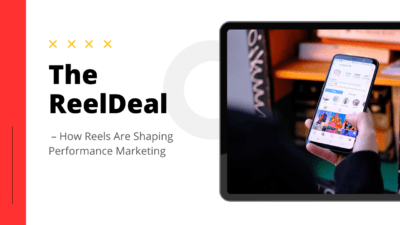In the current digital era, manufacturers must have a strong online presence; it is no longer an option. Although trade exhibitions and trade journals are still valuable, digital marketing solutions for manufacturers have a greater potential for engagement and reach.
A comprehensive digital marketing strategy can help manufacturers reach a larger audience, inform prospective buyers, and eventually increase sales. Manufacturers can use the following seven crucial digital marketing tactics to help them reach their objectives:
1. Build a Trustworthy and User-Friendly Website
The base of your online presence is your website. Potential clients will discover more about your business and items through this virtual storefront, with the goal of becoming leads or purchases. An informative and user-friendly website is essential for manufacturers.
The following are some essential components of a powerful manufacturing website:
Clear and concise value proposition: Within seconds of landing on your homepage, visitors should understand what your company does and the value you offer.
High-quality product information: Provide detailed descriptions, specifications, and high-resolution images or even 360-degree product views for your offerings.
Case studies and testimonials: Showcase successful projects and positive customer experiences to build trust and credibility.
Easy navigation: Ensure your website is easy to navigate with a clear menu structure and intuitive layout.
Mobile responsiveness: A significant portion of web traffic comes from mobile devices. Make sure your website is responsive and adapts seamlessly to different screen sizes.
Security: Implement strong security measures to protect user data, especially if you have an e-commerce component on your website.
2. Embrace Content Marketing’s Power
The main goal of content marketing is to produce and disseminate insightful, quality material that draws in and keeps your target audience interested. Content marketing can take many different shapes for manufacturers, such as:
Blog posts: Share industry insights, explain complex technical concepts in a digestible way, or offer tips and best practices related to your products.
Whitepapers and ebooks: Provide in-depth information on specific topics relevant to your target audience.
Case studies: Showcase real-world examples of how your products have helped customers solve problems or achieve their goals.
Videos: Product demonstrations, explainer videos, or behind-the-scenes glimpses into your manufacturing process can be highly engaging and informative.
Infographics: Present complex data or statistics in a visually appealing and easy-to-understand format.
You can educate potential clients, gain their trust, and position yourself as a thought leader in your field by continuously producing excellent content.
3. Leverage Search Engine Optimization (SEO)
SEO is the process of optimizing your website and content to rank higher in search engine results pages (SERPs). When potential customers search for keywords related to your products or services, you want your website to appear at the top of the search results. There are many technical and content-based strategies involved in SEO, but here are a few key aspects for manufacturers:
Keyword research: Identify the keywords and phrases that your target audience is using to search for products and services like yours.
Website optimization: Optimize your website content and structure with relevant keywords naturally integrated throughout your text.
Backlinks: Build backlinks to your website from high-authority websites in your industry. This can be achieved through guest blogging, industry directories, or collaborations with other businesses.
4. Don’t Underestimate the Power of Email Marketing
Email marketing remains a powerful tool for nurturing leads and building relationships with customers. For manufacturers, email marketing can be used for various purposes, including:
Sending newsletters: Share company updates, industry news, or educational content relevant to your target audience.
Promoting new products or services: Announce new product launches or highlight special offers and discounts.
Nurturing leads: Send targeted email campaigns to educate potential customers about your products and guide them through the sales funnel.
5. Embrace Social Media Marketing (But Do It Strategically)
Social media platforms offer a unique opportunity to connect with your target audience in a more personal and interactive way. While B2C companies often dominate social media, manufacturers can leverage these platforms effectively with the right strategy. Here are some tips:
Identify the right platforms: Focus on platforms where your target audience is most active. This could be LinkedIn for B2B companies or a platform like YouTube for showcasing product demonstrations.
Create high-quality content: Share visually appealing content that resonates with your audience. This could include product updates, behind-the-scenes glimpses into your manufacturing process.
Highlight company culture and expertise: Share employee stories, participate in industry discussions, and showcase your team’s knowledge and experience.
Run social media contests and giveaways: Generate excitement and engagement with targeted contests or giveaways related to your products or industry.
Utilize social media advertising: Paid advertising on social media platforms allows you to target specific demographics and interests, maximizing the reach of your content and promotions.
6. Utilize Pay-Per-Click (PPC) Advertising
PPC advertising allows you to display targeted ads on search engine results pages (SERPs) and other websites. For manufacturers, PPC advertising can be a powerful tool to reach potential customers who are actively searching for products or services like yours. Here’s how manufacturers can leverage PPC:
Target relevant keywords: Bid on keywords that your target audience is likely to use when searching for products or solutions related to your offerings.
Create compelling ad copy: Craft clear and concise ad copy that highlights the unique selling points of your products and encourages clicks.
Track and analyze results: Monitor the performance of your PPC campaigns and adjust your strategy as needed to optimize your return on investment (ROI).
7. Measure and Analyze Your Results
Every successful digital marketing strategy is built on a foundation of data and analytics. By tracking key performance indicators (KPIs) such as website traffic, lead generation, and sales conversions, you can gain valuable insights into the effectiveness of your campaigns.
Here are some essential metrics for manufacturers to track:
Website traffic: Monitor the number of visitors to your website and analyze where they are coming from.
Lead generation: Track how many leads you are generating through your various digital marketing channels.
Sales conversions: Measure how many leads convert into paying customers.
Engagement metrics: Track metrics such as likes, shares, comments, and click-through rates on social media posts and email campaigns.
You may determine what’s working well and what requires improvement by evaluating your data. This enables you to maximize your efforts and fine-tune your digital marketing approach in order to get the desired outcomes.
In summary
Because the digital world is always changing, manufacturers must modify their marketing plans accordingly. Manufacturers may engage with their target audience, build a strong online presence, and eventually increase sales by putting these 7 key digital marketing methods into practice. Recall that developing a thorough, data-driven digital marketing strategy that complements your unique business objectives is the key to success.




